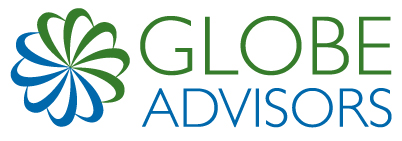By Eamonn Percy
Global Economic Turmoil
If the first week of January is any indication, then 2016 is shaping up to be a very interesting year! The Shanghai Composite Index fell 15% in the first six days, including 2 separate days that triggered temporary exchanges shutdowns.
The price of oil continues its decline, an ominous sign for energy intensive Canada, as West Texas Intermediate dropped 6% on January 11th alone to $31.12 (USD). While business cycle dips are to be expected, 2016 has the potential to unleash significant turmoil on both domestic and global businesses.
As I pointed out in my September, 2015 article in the Globe and Mail – Report on Business (Three Ways to Protect Your Business in Turbulent Times), good business leaders prepare for these periods by focusing on the three pillars of People, Products and Processes. However, just building these pillars is only half the job, the other half is maintenance and improvement. Like a house, only half the work is building the other half is maintaining it well.
Many business owners and CEOS are builders but, unless they have a well-rounded team with a complementary skill set, may be weak in maintaining what they have built. In addition, it’s the improvement over time which enables the business to adapt to the changing need of the markets.
Adapting to Change
This ability to adapt and improve over time is the biggest single opportunity I see in businesses today. In 2016, given the economic, demographic, political and technological changes underway, I believe it is even more important to adapt, as the very survival of many businesses may be at stake
As Charles Darwin said, “It is not the strongest of the species that survives, nor the most intelligent that survives. It is the one that is most adaptable to change.”
This leads to the questions – How does a person or a business adapt to change?
There are two ways, the hard approach and the easy one, and I definitely prefer the latter! The hard way is to have change foisted upon you or your company from the outside, forcing you into reaction mode, where you must respond instinctively and with available resources. Good luck!
The 1% Solution
The easy approach is to adopt a philosophy of lifelong learning or continuous improvement. So rather than waiting for an event to force you to change from the outside, you make small, regular and incremental improvements from the inside. I call this approach The 1% Solution, since 1% improvement made regularly, compound over time, just like money compounding in the bank, to give you massive, long-term results.
In business, this can be achieved by making innovation a corner stone of your culture or by adopting a formal continuous improvement program like Kaizen, Lean or Six Sigma. A business can achieve the same effect by becoming extraordinarily customer service focused, to gain valuable feedback, which can quickly be incorporated into new products, services and business processes.
For the individual, this can be achieved by adopting a personal system of continual improvement, surrounding yourself with accountability partners that want you to succeed, embarking on intensive lifelong learning, or engaging a coach, advisor or mentor to teach you.
What You Can Do
The approach I recommend to my clients is for the CEO to lead by example personally, while building a culture of continuous improvement in the business. This will encourage others for follow suit, and the resulting combination of people seeking to make small, but steady improvements each day while supported by a company culture, will ensure the sum of all such improvements makes the company better, stronger, faster and more adaptable to our changing world.

